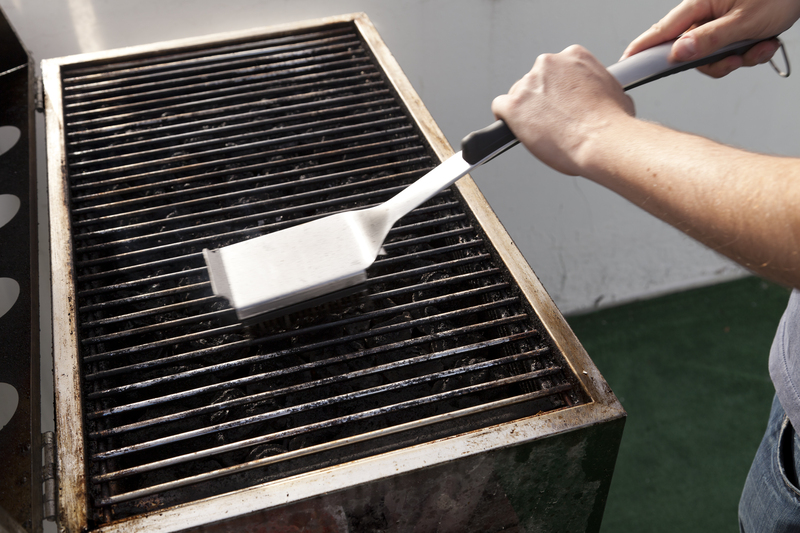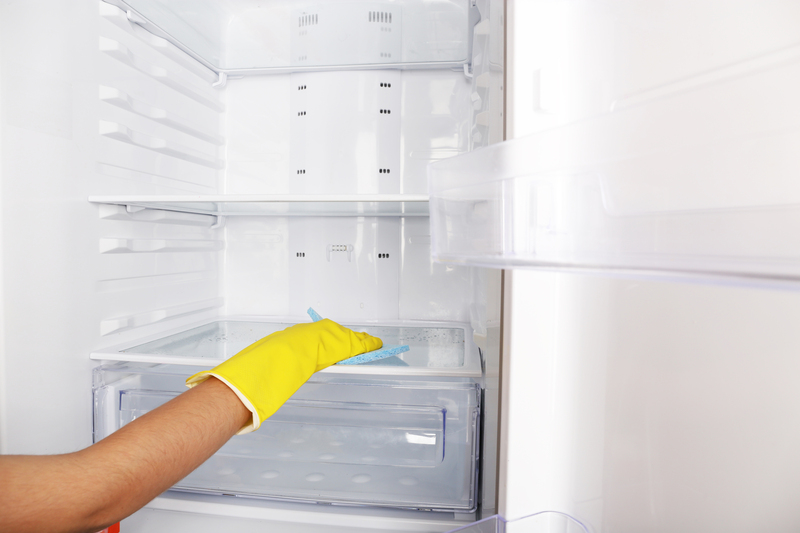Thrive in a Healthier Home with Reduced Dust and Allergens
Posted on 28/06/2025
Thrive in a Healthier Home with Reduced Dust and Allergens
Is your home truly a safe haven from sneezing, itchy eyes, and constant sniffles? Reducing dust and allergens can make a world of difference in your quality of life. Millions of households unknowingly harbor hidden irritants that can impact your health, comfort, and productivity. In this comprehensive guide, we will explore how to thrive in a healthier home with less dust and allergens, empowering you with practical solutions for cleaner air and better well-being.
Why Reducing Dust and Allergens Matters
Allergens--such as dust mites, pet dander, pollen, and mold--can trigger respiratory issues, allergic reactions, and aggravate conditions like asthma. Excess dust is not just unsightly; it is a carrier of these microscopic irritants. Creating a cleaner and healthier home environment can:
- Reduce allergy and asthma symptoms
- Improve sleep quality
- Boost energy and mental clarity
- Lower long-term health risks
- Enhance overall comfort for your household
How Dust and Allergens Accumulate
Dust forms from dead skin cells, fibers from fabrics, outdoor particles, and tiny bits of household debris. Add to this mix common allergens (pet dander, pollen, and mold spores), and your indoor air quality can quickly deteriorate. Without regular cleaning and preventive measures, these particles accumulate in your carpets, bedding, upholstery, and air ducts.

Spotting Allergen Hotspots in Your Home
Certain areas in your home are more prone to collecting dust and allergens. By identifying these hotspots, you can focus your efforts for maximum impact.
- Bedrooms: Bedding, mattresses, and pillows are prime habitats for dust mites and dander.
- Carpets and Rugs: These soft surfaces trap dust, pollen, and pet hair.
- Upholstered Furniture: Couches and chairs hold onto dust, especially in seams and cushions.
- Window Treatments: Heavy curtains and blinds catch dust and pollen drifting in from outside.
- Air Vents and Filters: Accumulated debris can circulate irritants throughout your home when heating or cooling systems operate.
- Entryways: Shoes, coats, and bags bring in outdoor particles.
Top Strategies to Reduce Dust and Allergens in Your Home
Now that you know where irritants lurk, let's explore effective ways to clean, maintain, and reduce household dust and allergens for a truly healthy home.
1. Regular and Strategic Cleaning
- Vacuum Twice Weekly - Use a vacuum equipped with a HEPA filter to effectively trap dust, pet hair, and allergens. Don't forget to vacuum under furniture and along baseboards!
- Mop Hard Floors - Dust that escapes your vacuum can be caught with a damp mop. Water traps particles that might otherwise become airborne.
- Dust Surfaces Properly - Ditch dry dusting cloths, which spread irritants. Use a barely damp microfiber cloth to wipe down surfaces so dust sticks and doesn't disperse.
- Wash Bedding Weekly - Wash sheets, pillowcases, and blankets in hot water (at least 130?F/54?C) to kill dust mites and remove allergens.
- Declutter - The more stuff you have, the more places dust can settle. Keep surfaces clear and store unused items in closed containers.
2. Improve Indoor Air Quality
- Use Air Purifiers - HEPA-enabled air purifiers in bedrooms and living spaces help capture airborne particles, pollen, and dander.
- Maintain Proper Ventilation - Open windows on mild days to refresh your air, but use screens to keep out outdoor allergens. Exhaust fans in kitchens and bathrooms prevent moisture buildup that encourages mold.
- Control Humidity - Dust mites and mold love humidity. Keep your indoor environment between 30% and 50% relative humidity with a dehumidifier during damp months.
- Change Filters Regularly - Replace HVAC and furnace filters every 1-3 months, or more often if you have pets or live in a dusty area.
3. Allergen-Proof Your Bedroom
- Use Allergen-Proof Coverings - Encase mattresses, pillows, and duvets in special anti-allergen covers to block dust mites and dander.
- Optimal Floor Coverings - Choose low-pile rugs or hard flooring, which harbor less dust than carpets. Wash bedroom rugs frequently.
- Clean Curtains and Blinds - Wash or vacuum window treatments every couple of weeks.
- Limit Stuffed Animals and Fabric Decor - These items easily trap dust. Wash plush toys regularly or keep them out of the bedroom.
4. Smart Pet Care
- Bathe Pets Regularly - Regular baths (with vet-approved shampoos) remove dander and reduce shedding.
- Keep Pets Out of Bedrooms - Bedrooms should be an allergen-free zone. Restrict pet access to maintain healthier sleep sanctuary.
- Groom Pets Outdoors - Brush your animals outside to prevent hair and dander from spreading around indoors.
5. Minimize Fabric Surfaces
- Opt for Leather or Vinyl Furniture - These materials repel dust and are much easier to wipe clean than textured fabrics.
- Choose Washable Items - Select rugs, throws, and slipcovers that can be laundered at high temperatures to eliminate mites and debris.
Choosing the Right Tools and Products
A healthier home starts with the right cleaning arsenal. Here are some recommended tools and products for minimizing household dust and allergens:
- HEPA-filter Vacuum Cleaner: Traps 99.97% of particles as small as 0.3 microns.
- Microfiber Cloths: Electrostatic properties pick up dust without spreading it.
- Hypoallergenic Laundry Detergent: Free from harsh chemicals that can cause skin or respiratory reactions.
- Natural All-Purpose Cleaners: Non-toxic, plant-based cleaners prevent chemical sensitivities.
- High-Quality Air Purifier: Especially important for allergy sufferers and homes with pets.
Prevention: Reducing Future Dust and Allergen Build-Up
While cleaning is crucial, preventing dust and allergens from entering and accumulating in your home is just as important. Start with these simple habits:
- Remove Shoes Indoors: This simple change can reduce tracked-in dirt, pollen, and more by up to 80%.
- Shower Before Bed: Wash off pollen, dust, and other pollutants after a long day, especially during allergy seasons.
- Use Door Mats: Place sturdy mats at every entrance and clean them regularly to trap particles at the threshold.
- Seal Windows and Doors: Fix cracks or gaps to prevent outside contaminants from drifting inside.
- Wash Hands Often: Especially after being outdoors, handling pets, or cleaning.
Addressing Mold: The Hidden Allergen
While dust may be visible, mold is often a hidden culprit. It thrives in damp, humid places like bathrooms, basements, and even behind walls. Mold spores can cause allergic reactions and respiratory distress.
- Fix Leaks Promptly: Repair leaking pipes or roofs quickly to prevent hidden moisture.
- Keep Bathrooms Dry: Use exhaust fans and squeegee shower walls.
- Regular Inspections: Check for musty odors, spots on walls, or discoloration near baseboards.
- Dispose of Moldy Items: If you discover mold on fabric, paper, or drywall, discard it--cleaning may not suffice.
If you spot extensive mold, contact a professional for safe removal.
How Lifestyle Changes Support a Healthier Home
Cleaning alone isn't enough; your daily habits also impact allergen levels. By making a few simple changes, you create a home environment where everyone can thrive.
- Don't Smoke Indoors: Cigarette smoke leaves harmful particles and worsens breathing problems for allergy-prone individuals.
- Encourage Handwashing: Teach children to wash their hands when entering the house.
- Invest in Hypoallergenic Bedding: Look for materials specifically designed for sensitive individuals.
- Be Mindful with Houseplants: Some plants can harbor mold in their soil. Choose low-allergen varieties and water sparingly.
Symptoms of Allergy and Dust Sensitivity
Wondering if your home is triggering symptoms? Common signs of allergy and dust sensitivity include:
- Frequent sneezing, coughing, or postnasal drip
- Runny or stuffy nose
- Itchy, watery eyes
- Wheezing or shortness of breath
- Worsening asthma, especially at night
- Fatigue or trouble sleeping
If you or your family experience these regularly at home, it's time to assess your cleaning routine and allergen exposure.

When to Consult an Allergy Professional
While thorough cleaning and preventive practices make a significant difference, some cases require professional help:
- Persistent or severe allergy symptoms
- Difficulty controlling asthma despite efforts
- Known or suspected mold infestation
- Unexplained illness or respiratory problems
Allergists can perform tests to identify your triggers and recommend medications or advanced interventions.
Your Path to a Healthier, Thriving Home
A healthier home is possible with a combination of routine maintenance, smart cleaning practices, and intentional daily habits. By focusing on reducing dust and allergens, you set the stage for fewer sick days, better sleep, and improved overall well-being.
Recap: Key Steps to Reduce Dust and Allergens
- Clean wisely and consistently, especially in bedrooms and living spaces
- Use effective cleaning tools and hypoallergenic products
- Control humidity and improve ventilation for fresher air
- Make smart lifestyle choices to prevent introduction and spread of irritants
Adopt these strategies and soon you'll thrive in a healthier home with reduced dust and allergens. Ready to enjoy cleaner air and a happier, healthier life? Start today--your body and mind will thank you!




